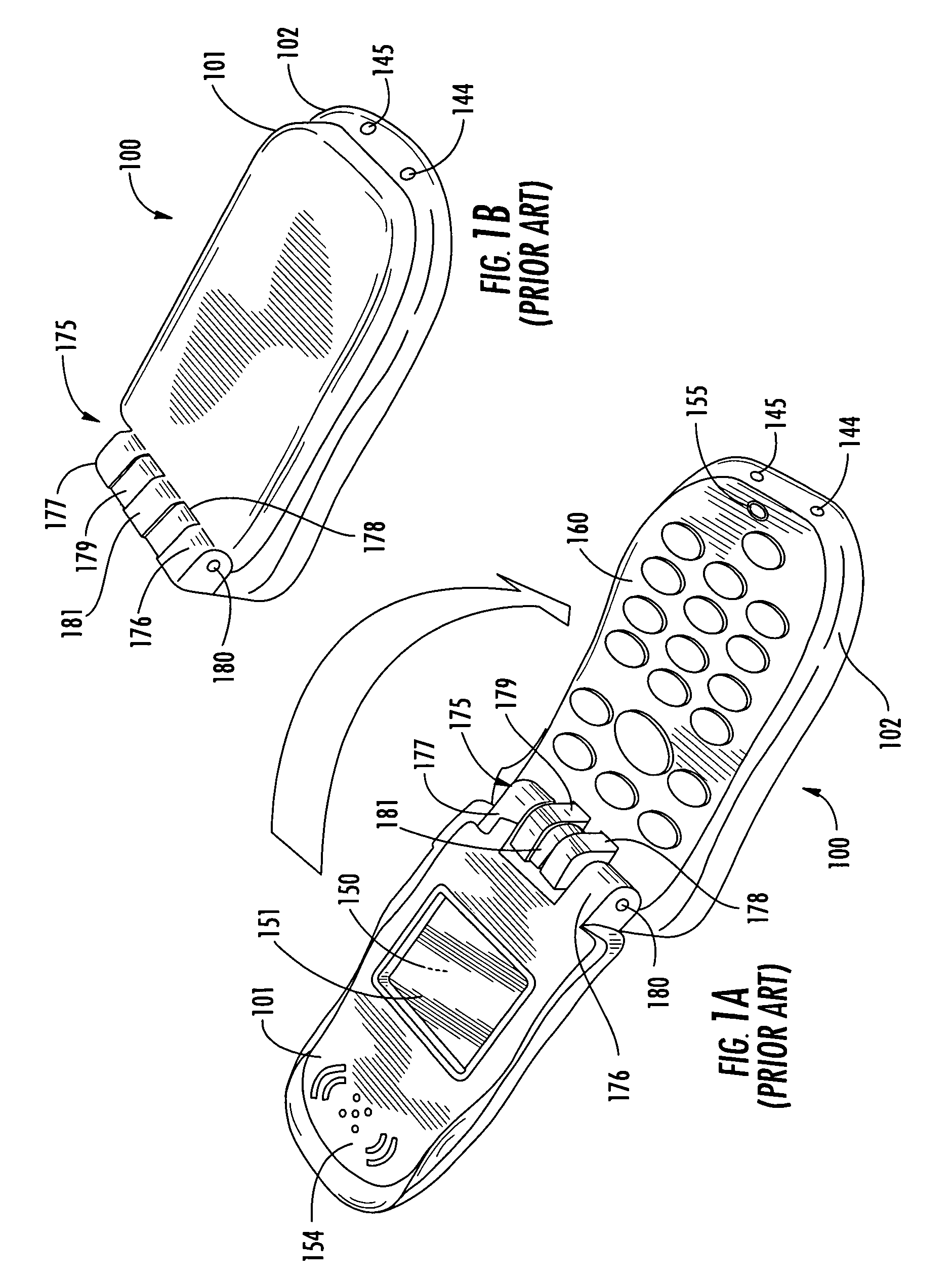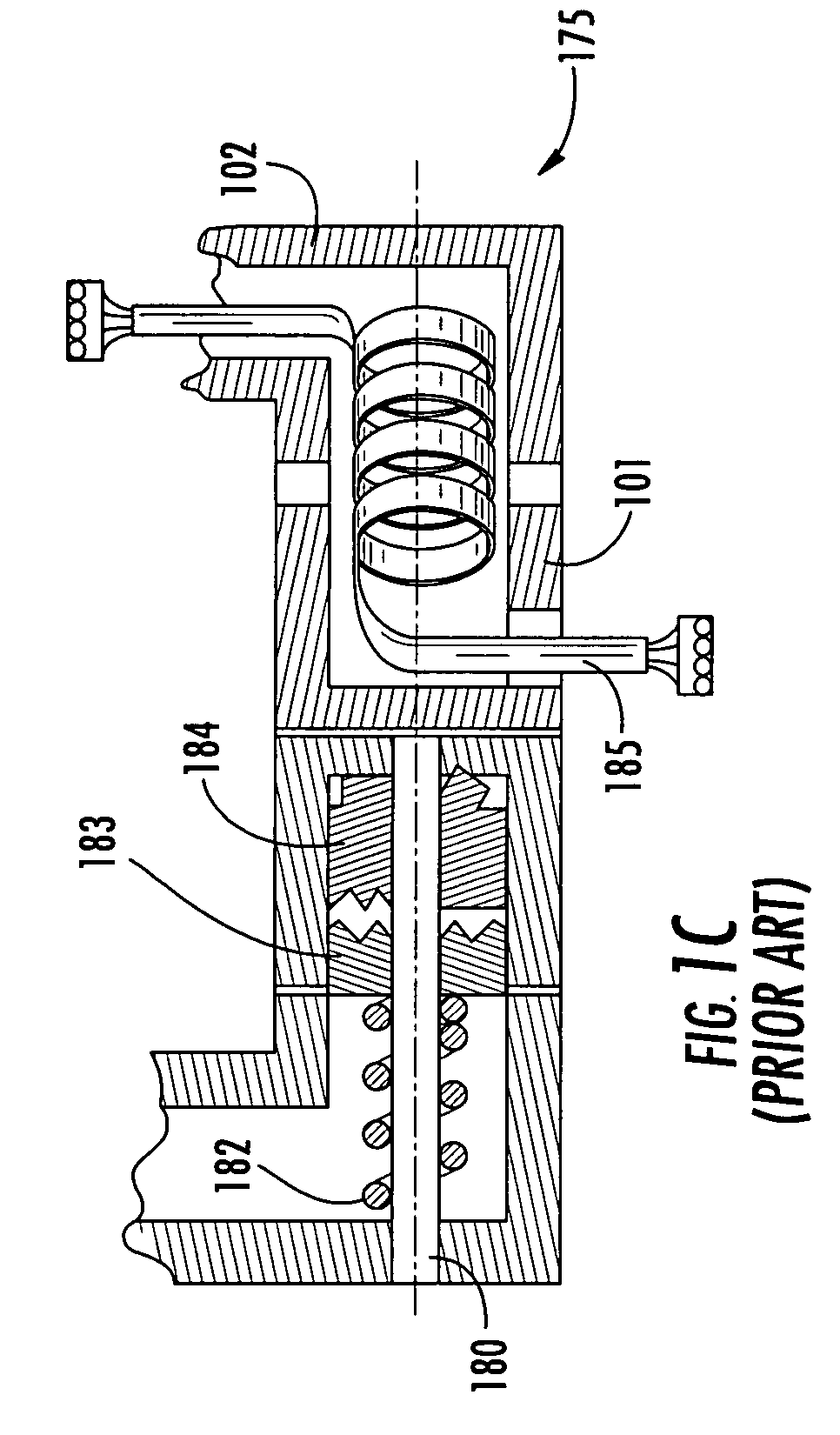Bi-stable hinge and systems using same
a technology of bi-stable hinges and hinges, applied in the field of mobile stations, can solve the problems of increasing the number of potentially damaging environments of mobile stations, increasing the mobility of mobile stations, and exposing them to an ever-increasing number of potentially damaging environments, so as to reduce the stress on various internal elements, reduce the effect of hinge assembly and cost-effective manufacturing products
- Summary
- Abstract
- Description
- Claims
- Application Information
AI Technical Summary
Benefits of technology
Problems solved by technology
Method used
Image
Examples
Embodiment Construction
[0031]The present inventions now will be described more fully hereinafter with reference to the accompanying drawings, in which some, but not all embodiments of the invention are shown. Indeed, these inventions may be embodied in many different forms and should not be construed as limited to the embodiments set forth herein; rather, these embodiments are provided so that this disclosure will satisfy applicable legal requirements. Like numbers refer to like elements throughout.
[0032]The mobile station of the present invention uses bi-stable structures. These bi-stable structures comprise one or more extendable, coilable, members that can be advanced from a coiled or retracted state to an extended state. The simplest of the conventional bi-stable structures is the common steel tape measure. Advantageously, as is apparent in view of a tape measure, bi-stable structures may be advanced and recoiled from one state to the other and back a plurality of times. Suitable structures are disclo...
PUM
| Property | Measurement | Unit |
|---|---|---|
| Angle | aaaaa | aaaaa |
| Angle | aaaaa | aaaaa |
| Angle | aaaaa | aaaaa |
Abstract
Description
Claims
Application Information
 Login to View More
Login to View More - R&D
- Intellectual Property
- Life Sciences
- Materials
- Tech Scout
- Unparalleled Data Quality
- Higher Quality Content
- 60% Fewer Hallucinations
Browse by: Latest US Patents, China's latest patents, Technical Efficacy Thesaurus, Application Domain, Technology Topic, Popular Technical Reports.
© 2025 PatSnap. All rights reserved.Legal|Privacy policy|Modern Slavery Act Transparency Statement|Sitemap|About US| Contact US: help@patsnap.com



